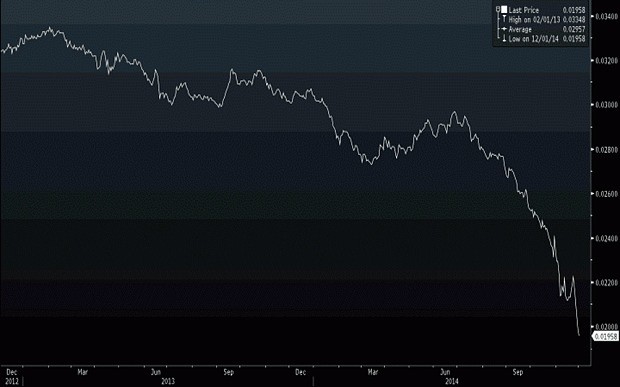The fall in the price of commodities, led by oil, has led to large falls in the value of currencies in developing countries. Financial markets are betting on countries’ trade balances being much weaker because of lower income from exports due to the price falls. Most dramatically this has been the case in Russia, but devaluations have been seen across the developing world.
A weaker currency increases the relative size of debt payments in foreign currencies such as the $ and €. Significantly higher debt payments will be the result. As of 16 December, the Russian Rouble had devalued 50% against the dollar. The Indonesian Rupiah is down 10% against the dollar since August, as is the Mozambican Metical. The fall in price of commodities will also reduce the direct income for governments.

The devaluations do not just affect debts owed by governments. Debt payments owed by companies in foreign currencies will also have dramatically increased. This will have knock-on impacts throughout a country as more revenue leaves in debt payments, and as companies potentially go bankrupt.
The turn in sentiment against developing countries has also increased the interest rates governments can borrow at. The ‘yields’ on all African country bonds increased dramatically in early December. Ghanaian bond yields rose from 8% to over 10%, Zambian from 6.5% to 7.5% and Senegal from 6.2% to 7.7%. These increases are based on what price debts are being bought and sold at in the financial markets; the interest rate charged on bonds countries have already issued does not change, so there is no immediate impact on debt payments. However, it does increase the interest rate on bonds issued in the future – including when bonds are refinanced (issuing new bonds to get the money to repay old bonds as they reach maturity).
There is now significant expectation that Russia and Venezuela will be unable to pay their debts, and have to default in 2015. But the landscape of falling commodity prices and devaluations is reminiscent of the early 1980s, which ultimately led to debt problems for much of the developing world.